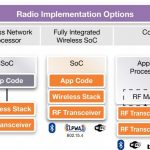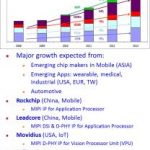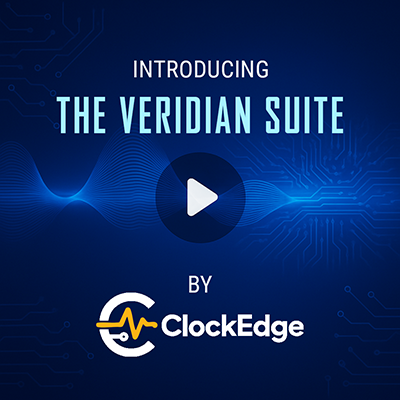CEVA Webinar “Challenges of Vision Based Autonomous Driving & Facilitation of An Embedded Neural Network Platform” will be held on November 16[SUP]th[/SUP] and will address one of the hottest topics today in our industry, probably the hottest in the automotive industry as all the players are working hard on autonomous vehicles.… Read More
Author: Eric Esteve
CEVA Webinar: Vision Based Autonomous Driving
Is FPGA Intel Next Big Thing for IoT ?
I write this article in reaction to another article from Seeking Alpha titled “Intel Next Big Thing”. I have extracted this from the article:
The IoT space is growing rapidly with the advent of connected cars, smart homes and a variety of connected devices and appliances. However, before a full-blown ecosystem around these devices… Read More
The IP Paradox: Sales are growing despite Semi Consolidation
IPnest is launching the “Interface IP Survey” since 2009, and we did it last September again. To build the survey as accurately as possible, I have followed the “divide and conquer” strategy. Interface protocols are varied, ranging from PCI Express, USB, or Ethernet, to memory controller (DDR3, DDR4, LPDDR3, LPDDR4 and more) … Read More
Emergence of Segment-Specific DDRn Memory Controller
The semiconductor industry is served today by memory devices supporting various protocols, like DDR4, DDR3, LPDDR4, LPDDR3, GDDR5, HBM, HMC, etc. The trend is clearly to define application specific memory-protocols and in some cases, application specific devices. But developing many, and different, memory controllers … Read More
Why Integrate Bluetooth LE IP in a Single Wearable SoC?
Did you know that, in over 800 teardowns of mobile and wearable products from 2012 to 2015, wireless chips outnumbered the actual number of products, indicating multiple wireless ICs in some designs ([SUP]1[/SUP])? It could be interesting to look at the advantages of integrating wireless technology such as Bluetooth low energy… Read More
CEO Interview: Marie Semeria of LETI
Laboratoire d’électronique des technologies de l’information (LETI) is a French research center, affiliate to the CEA (Commisariat a l’Energie Atomique). Since LETI creation in 1967, this affiliation has two consequences, the money was flowing from the deep pocket of the atomic industry to sustain advanced … Read More
Could Machine Learning be Available for Mass Market?
Machine Learning is at the hype peak, according with Gartner’s August 2016 Hype Cycle for Emerging Technologies. The demand for vision processor IP is strong in smartphone, automotive and consumer electronics segments. ASSP based solutions can make the job, but how can OEM create differentiation, control their destiny and … Read More
GlobalFoundries Enhances FDSOI Roadmap with 12FDX
Last year, GlobalFoundries filled the competitive gap by offering FD-SOI technology on 22nm, offering better performance than 28nm, you may have read about the news in Semiwiki. Timing is important, as Samsung has announced FD-SOI support one year before (2014) GlobalFoundries, but for 28nm. The announcement made by GlobalFoundries… Read More
Synopsys Webinar: MIPI Adoption Beyond Mobile, it’s now!
Some of the various MIPI specifications are now massively used in mobile (smartphone or tablet), especially the Multimedia related specs like Camera Serial Interface (CSI-2), Display Serial Interface (DSI) and D-PHY. You have to implement with CSI-2 or DSI controller a serial based physical interface, D-PHY specified up to… Read More
I3C Will Support MIPI Pervasion Beyond Mobile: IoT, Wearable, Automotive
MIPI I3C specification Draft Specification is now available to all MIPI Alliance members in First Draft Review, but we can be confident that I3C has been already implemented by some of the members. Before I3C specification, the de facto communication standard for sensors in mobile and consumer applications was I²C, requiring… Read More















Quantum Computing Technologies and Challenges